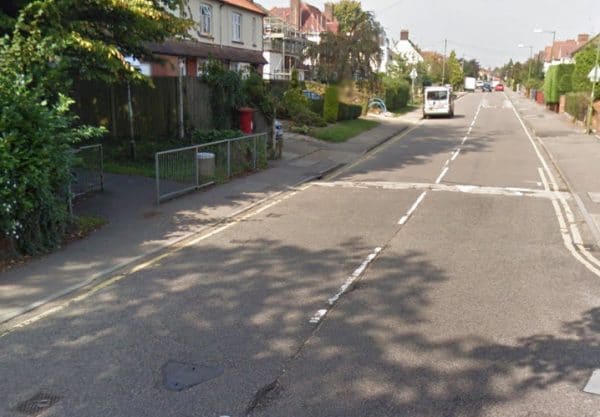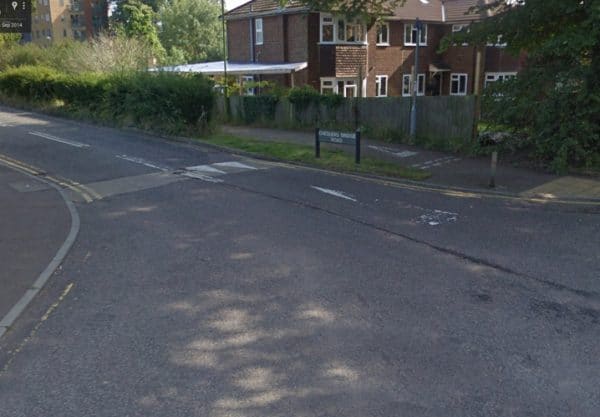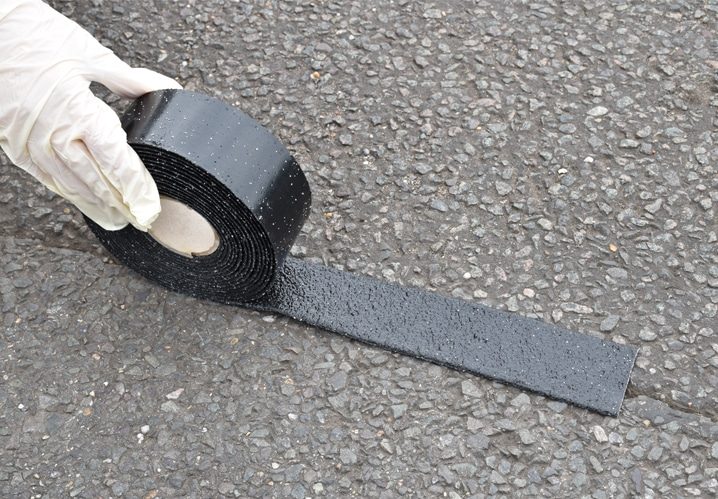Overbanding or fill and overband is the process of sealing cracks or joints in a tarmacadam surface.
It is very important to seal any cracks or joints in any asphalt surface. These are potential weak points that allow the ingress of water into the surface, the sub surface asphalt and crushed rock base layers. This leads to costly damage.
During install, tarmacadam is ‘’laid’’ by being built up in several layers. This includes varying sizes and grades of crushed rock, tarmacadam or asphalt depending on the specification issued. It also depends on the type of road traffic the tarmacadam surface is going to be subjected to.
The general road build specification would consist of a Sub Base course made of compacted crushed rock. Typically this is MOT type 1 hard-core. The next layer is the Binder course. This course can be made up of 1 to 2 layers and acts as a load bearing and strengthen course. This binder course is usually constructed of compacted AC20 tarmacadam.
The final layer or ‘’course’’ is known as the wearing or surface course. This is generally either made of SMA 10, SMA 6 or 55/10 HRA grade tarmacadam. The main purpose of the wearing course is to provide a surface for vehicles to drive on. It also protects the sub surface layer from damaged caused by vehicle traffic and exposure to the elements.
When a joint is made which is usually the result of undertaking a repair or a crack occurs in in the tarmacadam wearing course it leaves the sub surface courses exposed and venerable. Inevitably this leads to potholes being formed making the road difficult to drive on as well as shortening the lifespan of the tarmacadam significantly.

What Causes Cracks In Tarmac?
Cracks or joints in the asphalt road surface wearing course can be caused by a number contributing of factors such as thermal movement in the surface course and structural movements in the sub surface layers. Joints are made when roads are installed, when tarmacadam is laid it is done so in sections known as ‘’mats’’ which have an overbanded joint between each section.
Joints also form when repairs are made or loop cables are installed for parking barriers. The road surface needs to be cut or sawn into as part of the repair or installation. When a crack forms or a joint is made between old and new asphalt surfaces, this crack or joint in the wearing course becomes a weak point allowing the ingress water. Leaving crack or joint in the tarmacadam untreated or without an overband will allow water seep into the sub surface asphalt layers and ultimately into the roads foundations. This water then freezes in the colder months and thaws in the warmer conditions.
Each time this process happens the void the water has filled will expand allowing more and water to enter in the base layers, forming a bigger and bigger void each time As this process continues to repeat it will eventually this will blow out the surface course and create a pothole. Ultimately this will significant shorten the effective working life of the road surface leading to much more expensive repairs and longer periods of downtime.
How To Overband
Traditional techniques for overbanding a crack or joint in an asphalt surface generally consists of filling the joint using molten pitch. This is risky process to undertake and produces an untidy joint. Pitch derives from coal tar. It is a resin which must be heat to 180 degrees Celsius to melt.
Once the pitch has melt, the pitch can be decant into a watering can or pitch pot. Then you can pour the pitch into the joint or crack in order to seal it. This process is a health and safety nightmare to say the least. The process involves walking site around with a hot, molten and sticky substance. It can easily cause serious injury. Another disadvantage of using molten pitch to overband is that once poured is produces a smooth surface which has zero skid resistance, this makes the surface unsafe for vehicle traffic as the area overbanded are now smooth and slippery increasing a vehicle stopping distance which poses a higher safety risk for both vehicles and pedestrian alike.

A Safer Solution
Promain have a safer solution for fill and overband in the form of Kestrel Overbanding Tape, a thermoplastic tape that can be installed and returned to service in as little as 10 minutes. Kestrel Overbanding Tape has a HAPAS approval. It is quick and easy to install. It is also conforms to the British Standard for skid resistance (SRV).
Kestrel Overbanding Tape is quick and easy to install and far safer than traditional overbanding techniques. All you require to complete the install is a broom, optional leaf blower, thermoplastic gas torch, propane gas and a knife for trimming. There is no boiling of pitch or walking around with pot of molten tar. This eliminates a large amount of safety risks on site.
How To Install Overbanding
To install Kestrel Overbanding Tape first you need to ensure the surface is free form any dirt and lose particles. The easiest way to undertake this cleaning is to sweep the surface. Then you should blow away the lose particles with a leaf blower. Ensure to thoroughly clean the surface. The next step is to use a thermoplastic gas torch apply heat to the road surface. This will raise the tarmacadam surface temperature. It also ensures the surface dry aiding the adhesion of the Kestrel Overbanding Tape.
Following the heating of the surface lay out the tape over the crack or joint. Ensure you completely cover the crack or joint with the overbanding tape. Once the overbanding tape is in position, use the thermoplastic gas torch to apply an even heat to the tape. Ensure the tape has a consistent distribution of heat to allow it to properly melt. This allows the tape to properly adhere to the surface. Once adhered to the road surface can be trafficked in as little as 10 minutes. Alternatively, you can cool the tape quickly by dousing with cold water after heating.
Using Kestrel Overbanding Tape, is much safer alternative to traditional overbanding techniques. This takes a lot of the risks and work load out of compiling risk assessment and method statements for hot works on site.
Conclusion
If you have a project requiring overbanding and require further advice, please do not hesitate to contact our technical team on 01462 421 333 who will be happy to assist with the project requirements.
Want to read more articles on road markings? Click below:




